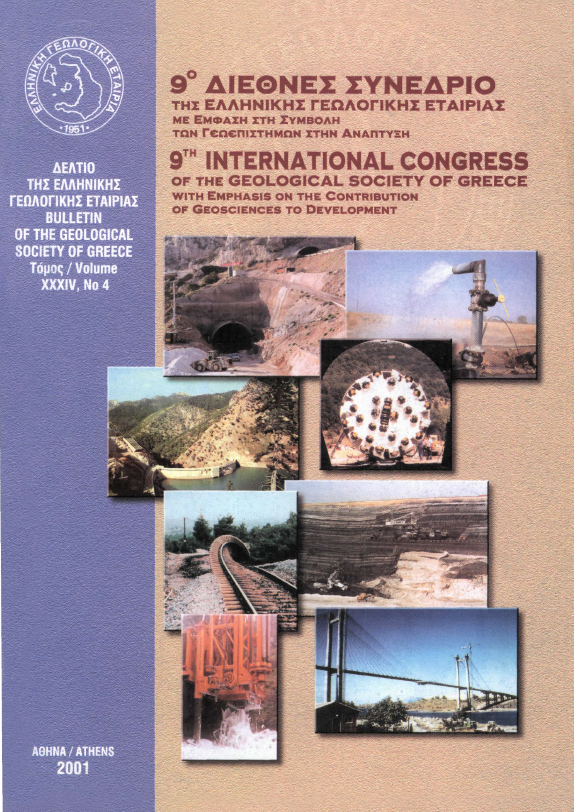The electric structure of the schizosphere in SE Thessaly, Greece, and its correlation with active tectonics
Résumé
We report the results of a magnetotelluric study in SE Thessaly, Greece, and their correlation with the active tectonics of the area. The data comprised 14 wide-band (150-0.005 Hz) soundings performed in the periphery of the cities of Volos, Velestino and N. Anghialos. The spatial analysis of the MT impedance tensor shows a transition from a shallow (< 1 km) geoelectric structure associated with apparent local structural features, to the deeper (> 3 km) schizosphere associated with large scale structures with ESE-WNW to SE -NW orientation. Quantitative interpretation was carried out with 2-D inversion and yielded high quality images of the geoelectric structure at depths 3-15 km; this depth range corresponds to the seismogenic layer. Conductive structures in the general E-W direction could be detected and correlated with neotectonic faults. In addition, a possible relic of the now extinct Mikrothivai volcano (1.5±0.1 Ma BCE) has been identified. Within the seismogenic layer the spatial MT data correlate almost exactly with the stress field calculated by inversion of focal mechanisms from local earthquakes and appear to provide an electrical image of the transition from the dextral NE-SW transformation associated with the N. Aegean trench to approximately N-S extension in the study area
Article Details
- Comment citer
-
Tzanis, A., & Drosopoulou, E. (2007). The electric structure of the schizosphere in SE Thessaly, Greece, and its correlation with active tectonics. Bulletin of the Geological Society of Greece, 40(3), 1304–1317. https://doi.org/10.12681/bgsg.16882
- Rubrique
- Geophysics and Seismology

Ce travail est disponible sous licence Creative Commons Attribution - Pas d’Utilisation Commerciale 4.0 International.
Authors who publish with this journal agree to the following terms:
Authors retain copyright and grant the journal right of first publication with the work simultaneously licensed under a Creative Commons Attribution Non-Commercial License that allows others to share the work with an acknowledgement of the work's authorship and initial publication in this journal.
Authors are able to enter into separate, additional contractual arrangements for the non-exclusive distribution of the journal's published version of the work (e.g. post it to an institutional repository or publish it in a book), with an acknowledgement of its initial publication in this journal. Authors are permitted and encouraged to post their work online (preferably in institutional repositories or on their website) prior to and during the submission process, as it can lead to productive exchanges, as well as earlier and greater citation of published work.










